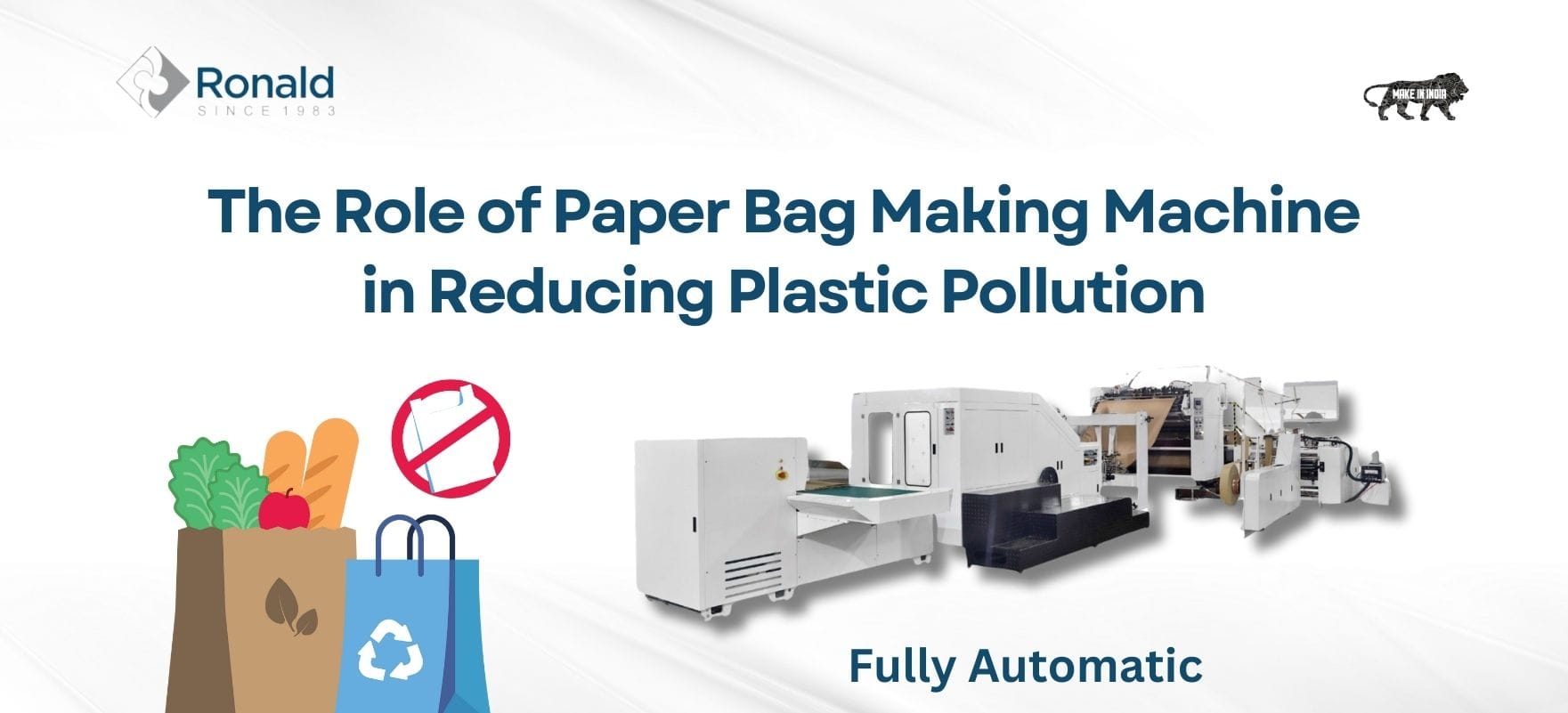
Customization Options with Paper Bag Making Machine The rise in eco-conscious consumer behavior has driven many businesses to adopt sustainable…
Ronald Machines » All about Inks used in Web Offset Printing Machines

Web Offset Printing Inks are specifically synthesized for use on offset printers. These inks must be able to bear reaction with the press fountain solution (a mixture of water and other chemicals distributed by the dampening system). The dispersion of particles of a solid, liquid, or gas in another substance is emulsification. In Web Offset Printing, the fountain solution is emulsified into the ink. Improper emulsification of water and ink may impair the body, color, or drying qualities of the ink.
Ink is made of three main ingredients – Pigment, Vehicle, and Modifiers.
1. Pigment
It is the colouring material in the ink. Two basic types of pigment in offset printing are Organic Pigment, which is made from carbon and the other is Inorganic Pigment, which is made by mixing different chemicals together. Organic pigment is used for black ink and the inorganic pigment is used for coloured inks.
2. Vehicle
It is the liquid that holds the particles of the pigment and carries them to the paper. Linseed Oil (natural oil obtained from the seeds of the flax plant) and Synthetic Vehicle (liquids from a mixture of chemicals) are two basic kinds of vehicles used in offset printing. Resin oil vehicles are a combination of solvents, oils, and resin. Resin wax vehicles are made from combining resins and waxes and are solid at room temperature.
The three kinds of inks used in Web Offset Printing: Cold-Set Ink, Heat-Set Ink, and UV Curing Ink
4. Cold-Set Ink
These inks contain a resin-wax vehicle that is solid at room temperature, and must be melted in order to be printed. These inks have high color strength, density, and good rub resistance. These are cost-effective and primarily used for newspaper prints. Since special heated presses are required for cold-set inks, they are not widely used.
5. Heat-Set Ink
These inks are developed for web-fed (continuous paper roll which is uncut and used in web offset lithography), fast, heat drying printing machines. Heat-set Ink is a quick-drying type of ink that dries by evaporation of its solvent in a high-temperature oven followed by cooling to set the ink. These ink constituents are pigment, a headset oil (solvent), a lithographic varnish (combination of oils. Resins, waxes, solvents used as ink vehicles), and a wax modifier. The ink reduces the risk of excessive ink spread and absorption. These inks provide low tack (describes the cohesion that exists between particles of the ink film, tackier ink prevents excessive emulsification of the ink with fountain solution) and minimum misting (a condition generated on high-speed presses by rapidly moving ink rollers that spray out filaments and threads of ink).
6. UV Curing Ink
Radiation curing is the technology of utilizing short-wavelength ultraviolet (UV) light, or high-energy electrons from electron-beam sources, to cure special reactive coatings, varnishes, inks, and adhesive formulations. This is a type of radiation-curing ink that dries with the application of ultraviolet light. UV curing ink vehicles are composed of fluid oligomers (small polymers), monomers (light-weight molecules that bind together to form polymers), and initiators that, when exposed to ultraviolet radiation, release free radicals that cause the polymerization (combining of smaller molecules to form a longer one, called polymer) of the vehicle, which hardens to a dry ink film containing the pigment. UV curing inks are not cheap and are therefore used for specialty printing like metal decoration, screen printing, cosmetic packaging, etc.
Other useful properties to understand while considering web offset inks are temperature stability, length, tack, drying, transparency, ink holdout, to name a few.

Customization Options with Paper Bag Making Machine The rise in eco-conscious consumer behavior has driven many businesses to adopt sustainable…

How Paper Bag Making Machine Contribute to Zero Waste Goals The ever-growing mountain of plastic waste is a pressing environmental…

Visiting Drupa 2024 would be beneficial? Technological Innovations: Drupa showcases the most cutting-edge advancements in printing technology. By attending, you…

The Role of Paper Bag Making Machine in Reducing Plastic Pollution In an era where environmental consciousness is paramount, the…
WhatsApp us